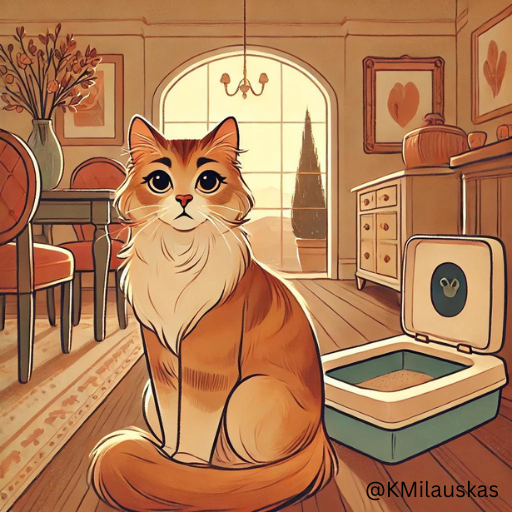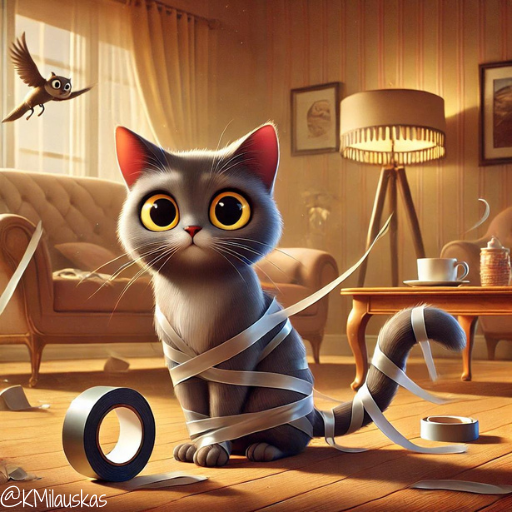Understanding Behavioral Changes in Older Cats
As a seasoned pet sitter with years of experience under my belt, I’ve had the pleasure of caring for all sorts of pets, each with their own unique personalities and quirks. Recently, I’ve been working with a pair of cats that I’ve watched over the past three years. These two feline companions have always been a joy to care for—affectionate, well-behaved, and generally low-maintenance. However, during my most recent visit, their owner informed me of a new and rather unpleasant development: one of the cats had started pooping on the dining room floor instead of using her litter box.
Through careful observation (and the help of a strategically placed camera), I identified the culprit: the female cat, who is about 10 years old. This behavior is concerning, but it’s also not uncommon, especially in older cats. Understanding why this might be happening is the first step toward resolving the issue and ensuring your cat stays healthy and happy.
Possible Reasons for This Behavior
When a cat suddenly changes its bathroom habits, it’s often a sign that something is wrong. Here are some potential reasons why an older cat like my client’s might start pooping outside the litter box:
- Medical Issues: The first thing to consider is whether there might be an underlying medical issue. Cats, especially as they age, can develop conditions such as arthritis, digestive problems, or urinary tract infections (UTIs) that make it uncomfortable or difficult for them to use the litter box. If your cat is experiencing pain or discomfort when climbing stairs, squatting, or using the litter box itself, they may look for a more accessible location to relieve themselves.
- Behavioral Changes Due to Aging: Just like people, cats can experience cognitive changes as they age. This can lead to confusion, anxiety, or a decrease in their ability to remember routines. If a cat starts associating the litter box with something negative or simply forgets its usual habits, it may choose to eliminate in other parts of the house.
- Litter Box Aversion: Over time, a cat may develop an aversion to its litter box for a variety of reasons. This could be due to a dirty box, an unfavorable location, or even the type of litter being used. For instance, if the litter box is located in the basement, as in this case, an older cat might find it too challenging to reach, particularly if stairs are involved.
- Stress or Environmental Changes: Cats are creatures of habit and can be quite sensitive to changes in their environment. If there have been any recent changes in the home, such as new furniture, different people, or even other pets, this can cause stress and lead to a change in bathroom habits. It’s worth considering whether anything in the home environment has shifted that might be upsetting the cat.
- Territorial Issues: If there is more than one cat in the household, as there is in this case, it’s possible that territorial disputes are at play. The cat might be marking the dining room floor as a way of asserting dominance or responding to perceived competition over resources like the litter box.
Steps to Address the Issue
If you’re facing a similar situation with your cat, here are some steps you can take to address the issue:
- Visit the Vet: Before anything else, it’s crucial to rule out any medical issues. A trip to the vet can help identify if there’s an underlying health condition that needs to be treated.
- Improve Litter Box Accessibility: Make sure the litter box is easily accessible to your cat. For older cats, this might mean moving the litter box to a more convenient location, such as on the same floor where they spend most of their time. You might also consider adding an additional litter box in the area where the cat has been pooping.
- Evaluate the Litter Box Setup: Ensure the litter box is clean and appealing to your cat. Try different types of litter to see if your cat has a preference, and consider a litter box with lower sides if arthritis or mobility is an issue.
- Reduce Stress: Take steps to minimize any stressors in your cat’s environment. This might involve creating a calm space where your cat can retreat, using pheromone diffusers, or ensuring there are enough resources (like litter boxes, food bowls, and resting spots) for all the cats in the household.
- Monitor and Adjust: Once you’ve made some changes, keep a close eye on your cat’s behavior. If the problem persists, don’t hesitate to reach out to your vet or a feline behaviorist for further guidance.
Final Thoughts
Cats are wonderfully complex creatures, and when they start behaving differently, it’s usually their way of communicating that something is off. By understanding the possible reasons behind these changes and taking proactive steps to address them, you can help ensure your cat remains healthy and content. Remember, patience and empathy go a long way in resolving these kinds of issues—your cat is counting on you to help them through it.
If you’re dealing with similar challenges or have any concerns about your pet’s behavior, feel free to reach out. I’m always here to help!



